Well, it was not just Thamel that was changing fast. The whole country was experiencing change. I had some first hand insights to some of these changes that were going on outside the capital city.
By now, you must have figured out that I spent my formative years mostly with my grandparents. My dad was a government employee (department of Agriculture) and he was stationed outside the valley, so my mother had to accompany him wherever my dad’s job took him. In the late 60s, my dad worked for the Rapti Valley Resettlement Project in Nawalpur (Nawal Parasi District) in the Terai. There were no roads to Chitwan (a neighboring district on the western edge of the Narayani River). From Kathmandu, the ride involved taking the bus to Hetaunda (a small market town about 100 km south of the Valley) via the Tribhuvan Highway (Kathmandu-Birgunj), then taking the bus (I am not sure if a regular bus service existed then) on the dirt road to Narayan Ghat, then taking the ferry across the Narayani River, switch to another bus and continue further toward Parasi. I have vague recollections of my first road trip outside the Valley. My previous visit to Janakpur was on an airplane flight of which I remember nothing.
Anyway, it so happened that my father’s officemate was in Kathmandu for a visit to the Department of Agriculture. As he had traveled from Nawalpur on an official car, my parents had requested that he visit our house in Paknajole, and take me with him to Nawalpur if my grandfather granted his approval. So this offical (and I suppose the driver) came to our house, talked to my grandparents who asked me to be ready for this very long journey to the Terai. It must have been hard for my grandfather to let me go as he did not have a strong liking of places outside Kathmandu and he certainly did not like the malaria-infested (which had been eradicated in the 50s) hot tropical lowlands. Anyway, we were soon on the road to Chitwan. I was very excited about this trip, not only was I looking forward to meeting my parents after a long time, but I was also very curious about the road journey and the new places that I would be seeing. As a three year old boy, I had enjoyed my trip to Janakpur. This time I was older (7 years old) and was ready for the adventure. I was given two tablets to drink lest I fall sick on the road. I don’t remember much after that. What I do remember is that the road from Hetaunda to Narayan Ghat was basically a dirt road, and could be travelled only on a four wheel drive like the ones we were riding. It was already dark by the time we reached Hetaunda. The Tribhuvan Highway is a treacherous road, rising up and down the valley with numerous hairpin curves and then reaching to a height of nearly 8,000 ft above sea level at Sim Bhanjyang (almost a mid-point between Kathmandu and Hetaunda; on a clear day it is possible to see the summit of Mt. Everest from Daman, the hill below Sim Bhanjyang). The journey was scary but fun.
It all felt very strange once we hit the road from Hetaunda toward Chitwan. Chitwan, as a physical location does not exist, it is a District and not a town or a village. But people made frequent references to Chitwan and not Naraya Ghat or Bharatpur where the district headquarter is located. Anyway, the jeep was traveling on a dirt track which was hardly wider than ten feet. There were trees and stumps all over the place, so the driver had to carefully navigate the jeep through the jungle. We had to cross numerous ravines and rivers. Chitwan was still densely forested (it is the home of the famous Chitwan National Park and the Tikauli (Barandabar) forest), punctuated by small hamlets dotted by thatch-roofed huts. I remember vividly that the driver would draw our attention to the glowing eyes in the dark (I learnt later that they were the eyes of sambar deer (Axis axis), and howls of wild animals. Chitwan was, and still is, famous for tigers, rhinoceros, crocodiles and other big-game mammals, so I was thrilled (honestly, I was afraid) to be on the road. We came to our stop for the night somewhere in the middle of the jungle (I think it was Bharatpur but I am not sure about it). The following morning we went down to the river at Narayan Ghat, which back then was mostly a collection of thatch-roofed houses. I do not remember seeing a concrete house, or may be I just did not see that part of the town. Anyway, our jeep was loaded on to the ferry boat. The interesting this about the ferry was two boats (timber construction) were tied together to make them wide enough to load vehicles. The river was big; I had not seen anything like that before. The view was just marvelous. So we were on the boat and a few minutes after we were on the Nawal Parasi side of the river. The jeep was unloaded, and after crossing a shallow section of the river we were back on the dirt road. I don’t remember how or what time did we arrive at Nawalpur. What I remember is that from a hill top (Daunne Danda), one could see the Narayani river below and its numerous sandbanks; the view toward Chitwan was just magnificent – it was densely packed with tall trees (mostly Sal (Shorea robusta)). Nearby, I could see the dense undergrowth, tall trees of all shapes and forms, and numerous climbers and creepers hanging on to the trees.
This journey had left a vivid impression on me. Here I was, a seven year old boy from the city, partaking in an adventurous, occasionally hair-raising, jeep ride through one of the last vestiges of pristine forests in the country. The scenery everywhere was wild and beautiful, the road interrupted by numerous clear-bottom streams in which little fish swam peacefully, the air crisp but humid, the cries from the wild strange and mysterious. This was in total contrast to what I was used to in the city. I thought I was in paradise!
Saturday, August 8, 2009
Subscribe to:
Post Comments (Atom)
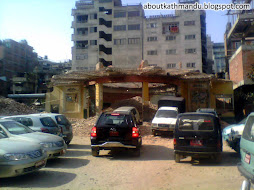





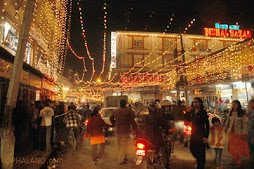


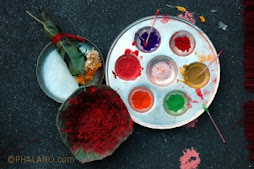




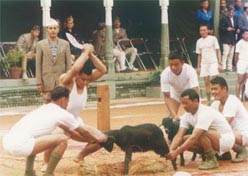




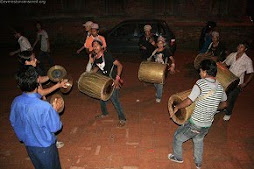
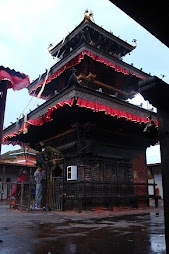























No comments:
Post a Comment